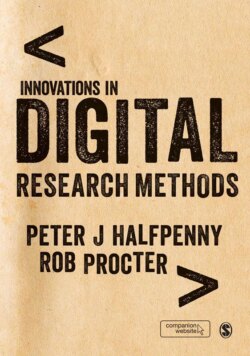Читать книгу Innovations in Digital Research Methods - Группа авторов - Страница 12
На сайте Литреса книга снята с продажи.
1.1.2 e-Infrastructure
ОглавлениеSince the beginning of the new millennium, a world-wide effort has been underway to create the research infrastructure and to develop the research methods that will be needed if the ‘data deluge’ is to be harnessed effectively for research. A new generation of distributed digital technologies is leading to the development of interoperable, scalable computational tools and services that increasingly make it possible for researchers to locate, access, share, aggregate, manipulate and visualize digital data seamlessly across the Internet on a scale that was unthinkable only a decade or so ago.
e-Infrastructure comprises the information and communication technologies (ICTs) – the networked computing hardware and software – and the digital data that are deployed to support research. A very broad definition has been adopted by Research Councils UK (2014), which spells out more fully the components that are brought together:
e-Infrastructure refers to a combination and interworking of digitally-based technology (hardware and software), resources (data, services, digital libraries), communications (protocols, access rights and networks), and the people and organisational structures needed to support modern, internationally leading collaborative research be it in the arts and humanities or the sciences.
This definition highlights the complexity of e-Infrastructure and, correspondingly, the enormity of the socio-technical efforts required to efficiently integrate distributed computers, data, people and organizations in order to deliver tools and services that scientists can readily adopt to their advantage in pursuing their research. (In the US, the term cyberinfrastructure is more commonly used than e-Infrastructure.)
e-Research is the generic term that has been coined for the innovations in research methods that are emerging to take advantage of this new and vastly more powerful e-Infrastructure. Similarly, e-Social Science is the research facilitated by the e-Infrastructure. The ‘e’ in all these terms is short for ‘electronic’, although it is sometimes rendered as ‘enhanced’.
The scope of the book is the application of e-Research methods across the social sciences, including both quantitative and qualitative data collection and analysis. The aim is to introduce the reader to the application of innovative digital research methods throughout the research lifecycle, from resource discovery, through the collection, manipulation and analysis of data, to the presentation and publication of results.
